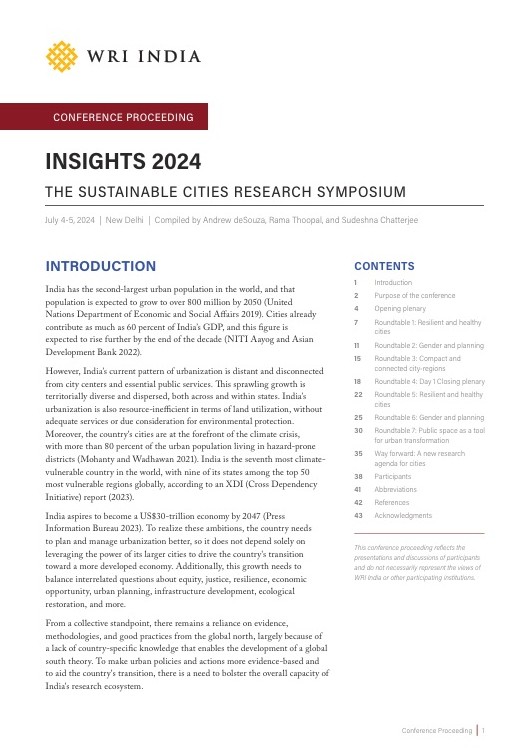Regulating New Mobility II: The Changing Framework of Motor Vehicle Regulations in India and its Impact
by e -
On November 8, 2016, WRI India Sustainable Cities and Zehn Legal hosted part two of a two-part webinar series on the applicability of regulatory frameworks governing motor vehicles for on-demand taxi aggregators and other shared mobility enterprises in India. Part one of the series focused specifically on the Motor Vehicles Act of 1988 and its key sections, concepts and definitions. This part focuses on the possible implications of the upcoming Motor Vehicles (Amendment) Bill 20161 on the sector. The webinar was delivered by Aditya Kini of Zehn Legal – a law firm with vast experience in India’s transportation law and policy.
The Need for New Definitions
Part one of this series outlined the legal framework of the Motor Vehicles Act, current definitions of different classes of commercial vehicles, and the permits and licenses required to operate them. Following from this introduction, Part two of the series commenced by recapping the events since 2010, when the need to regulate a new type of model became apparent.
The entry of app-based, on-demand taxi aggregators (also known simply as aggregators) in the last few years has disrupted urban transport. The implications for passenger safety and accountability have compelled the central and state governments to revisit existing laws to create a framework to regulate such businesses.
The webinar focused on differentiating between the terms ‘agent’ and ‘aggregator’ and their significance for policy-makers in trying to understand the changing landscape of motor vehicle based businesses in India.
State-specific fleet or radio taxi schemes, were based on concepts of ownership of vehicles and exclusive attachment of drivers to one operator or company. Aggregators neither own vehicles nor employ drivers, putting them outside the scope of the existing domestic taxi operator schemes. Since regulators saw the basic function of aggregators as ‘connecting a commuter to a driver’, they were included under the term agent as defined in Section 93 of the MV Act.
However, the concept of an agent is very different. The webinar illustrated how the definition of agent applies more specifically to travel agents that sell bus or train tickets and/or distributors of goods. Licensing of aggregators called for a broader set of compliance and liability considerations, requiring a more specific definition of the term, at its own individual capacity.
Creating a Provision for and Defining the term 'aggregator'?
As a first step towards defining and licensing aggregators2, the Ministry of Road Transport and Highways (MoRTH) issued the ‘Draft Advisory for Licensing, Compliance, and Liability of On-demand Information Technology based Transportation Aggregators’ on October 8th, 2015. These draft guidelines, provided each state a broad framework and greater autonomy to formulate policies for aggregators, applicable within their jurisdictions.
Since there was no standard definition of an aggregator, different states drafted their own definitions. The webinar briefly discussed the merits and demerits of three specific definitions of the term aggregator, found in draft regulations released by the state governments of Delhi, Karnataka, and West Bengal. Several other states are in the process of finalising their draft regulations including the state government of Maharashtra which released the Maharashtra Draft City Taxi Rules on 15 October 2016.
Key Liability Considerations for Transport Businesses
Next, the webinar focused on key liability considerations that transport based businesses must take into account in order to ensure that they comply with state-specific legal requirements at all points in time. These considerations include:
Passenger safety: Provision of a first aid box, fire extinguisher, and other safety features in the event of an accident. In addition, to ensure customer security and satisfaction, aggregators need to provide emergency service numbers, a system for addressing grievances, and share real-time location with authorities in case of incidents.
Business compliance: Secure appropriate permits and licenses, conduct thorough background checks of drivers, and comply with other state-specific requirements of minimum fleet size and minimum guarantee amount for licensing.
Driver behaviour: Ensuring that drivers attached to their trade name possess a valid driver’s license and commercial badge, behave professionally, regularly undertake refresher courses, and are responsive to customer feedback.
Vehicle norms: It is the responsibility of the business to make sure that vehicles operate on prescribed alternative fuels, and are compliant with emissions standards and other applicable norms.
The Motor Vehicles (Amendment) Bill, 2016
The final segment of the webinar focused on the Motor Vehicles (Amendment) Bill 2016 and its implications for mobility enterprises. According to Kini, the Bill attempts to create a modern legal framework for motor vehicles and motor vehicle related businesses in India to bring them at par with global standards in transport policy. It defines an aggregator as:
“…a digital intermediary or market place for a passenger to connect with a driver for the purpose of transportation”.
This proposed definition is very different than that of an agent and, Kini suggested, is a step in the right direction in terms of understanding the function of taxi aggregator services. Additionally, the Bill provides greater powers to state governments to draft schemes and policies to encourage further development and innovation in the transportation market, particularly in relation to ride-sharing. The webinar concluded with Kini noting that the new mobility space is evolving, and the coming years will be a very interesting time for shared mobility businesses in India.
-
Introduced in parliament in mid-2016, the Motor Vehicles (Amendment) Bill 2016 is up for debate in the winter session. ↩
-
The first definition of the term comes, not from a motor vehicle law, but from the Service Tax (Amendment) Rules of 2015. These Rules sought to include the services offered by aggregators under service tax law and defined an “aggregator” as “a person, who owns and manages a web based software application, and by means of the application and communication device, enables a potential customer to connect with persons providing a particular service under the brand name or trade name of the aggregator”. Though this wasn’t a motor vehicle specific definition, it was an inclusive one, taking into account several different market areas beyond taxi aggregators. ↩


